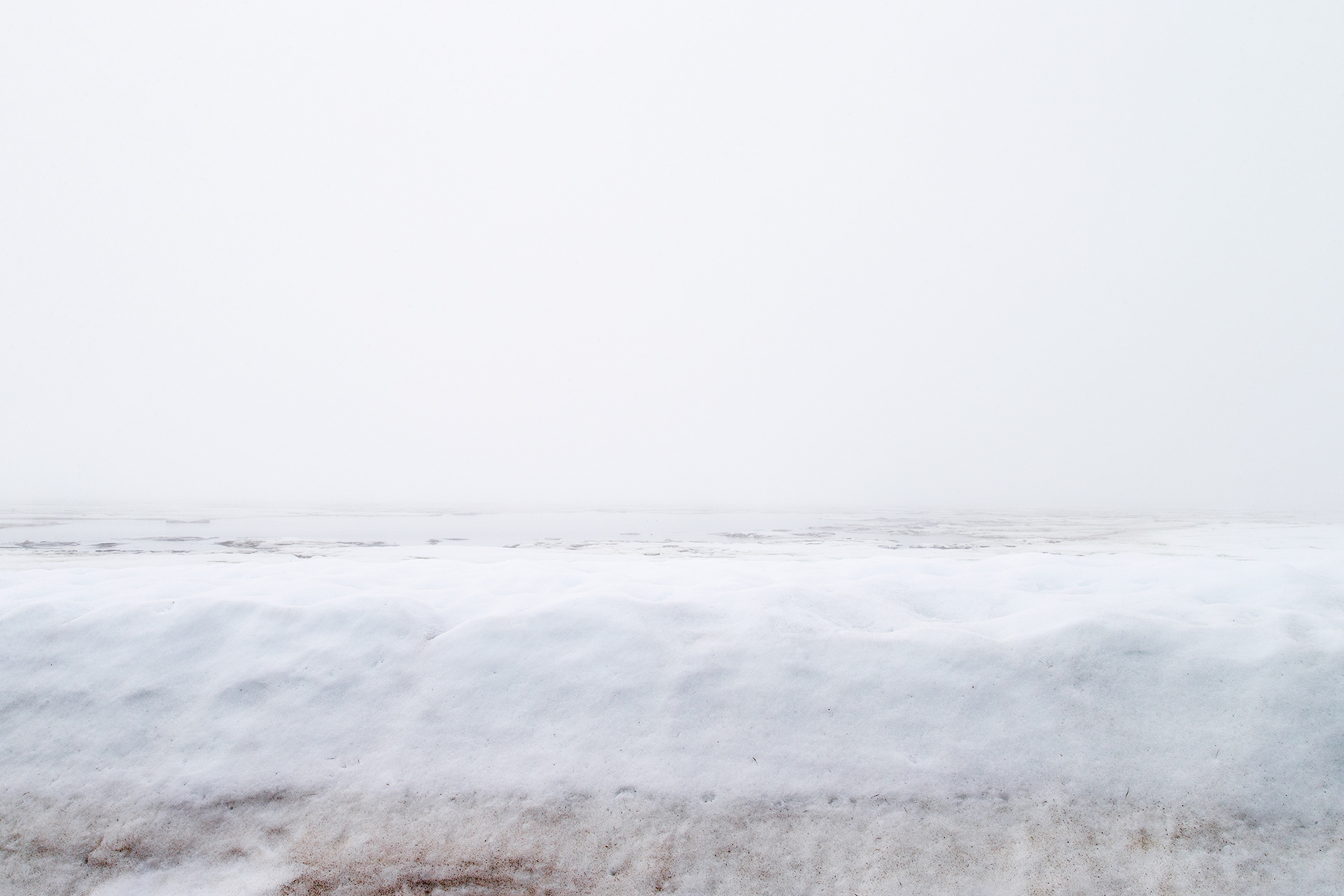Dispersal is a photographic series and bioart project that visualises the effects of pollinator decline and climate change.
The project was done at Zackenberg research station in Greenland in 2018 where I collaborated with biologist Riikka Kaartinen. The title of the series refers to the spread of pollen, which often happens with the help of pollinating animals. In Greenland only two bumblebee species live naturally, and in the absence of bees, muscid flies are the most important pollinators. Biologists at Zackenberg have followed their numbers over a few decades, and the collected data shows that the abundance of muscid flies has decreased by up to 80% during this period. Climate change is considered to be the likely main cause.
I created an experiment to study how the amount of pollinating flies affects pollen dispersal. Fluorescent pigment was used to dye the pollen of the mountain avens (Dryas octopetala), which is a keystone species in Greenland. Selected avens patches were covered with isolation tents and fluorescent pigment was put on 20% of the flowers in each patch. The patches were photographed under ultraviolet light right after adding the pigment and then covered with tents. Pollinators were released inside. There were two compositions: The A tents had 13 pollinators in total, including 10 muscid flies The B groups were otherwise similar but had only 2 muscid flies. The insects were collected after 72 hours and photographs of the flower patches were taken again to record the results.
The effects of climate change are more marked in Arctic areas where climate is warming faster and the ecological communities are simpler and, thus, more vulnerable. The decline of muscid flies could further threaten the whole ecosystem. The series includes 4 image pairs that were photographed under ultraviolet light, 3 other photographs taken in Zackenberg and a collection of pollinators that were used for the test.

Slot A1 at 0h
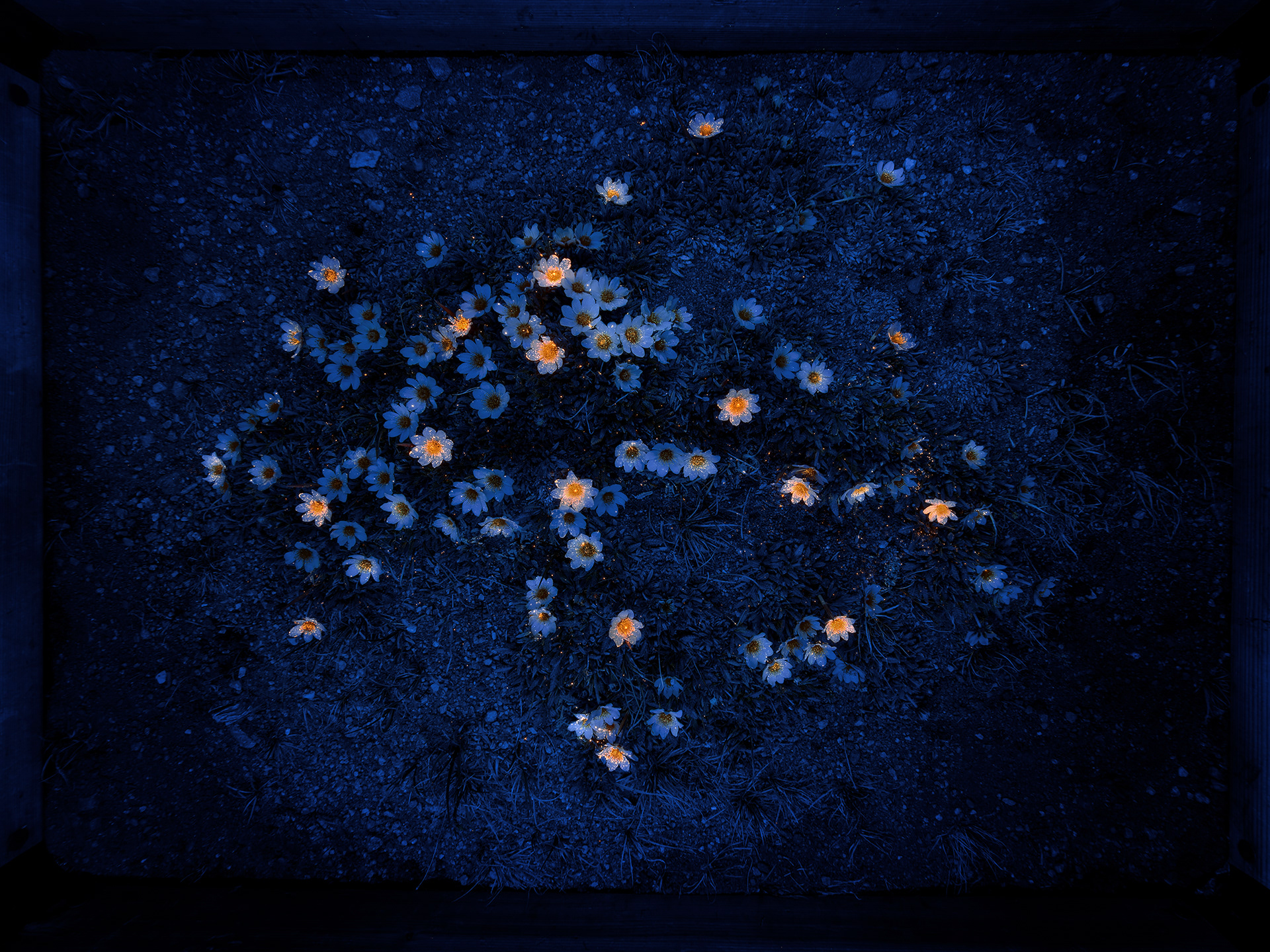
Slot A1 at 72h
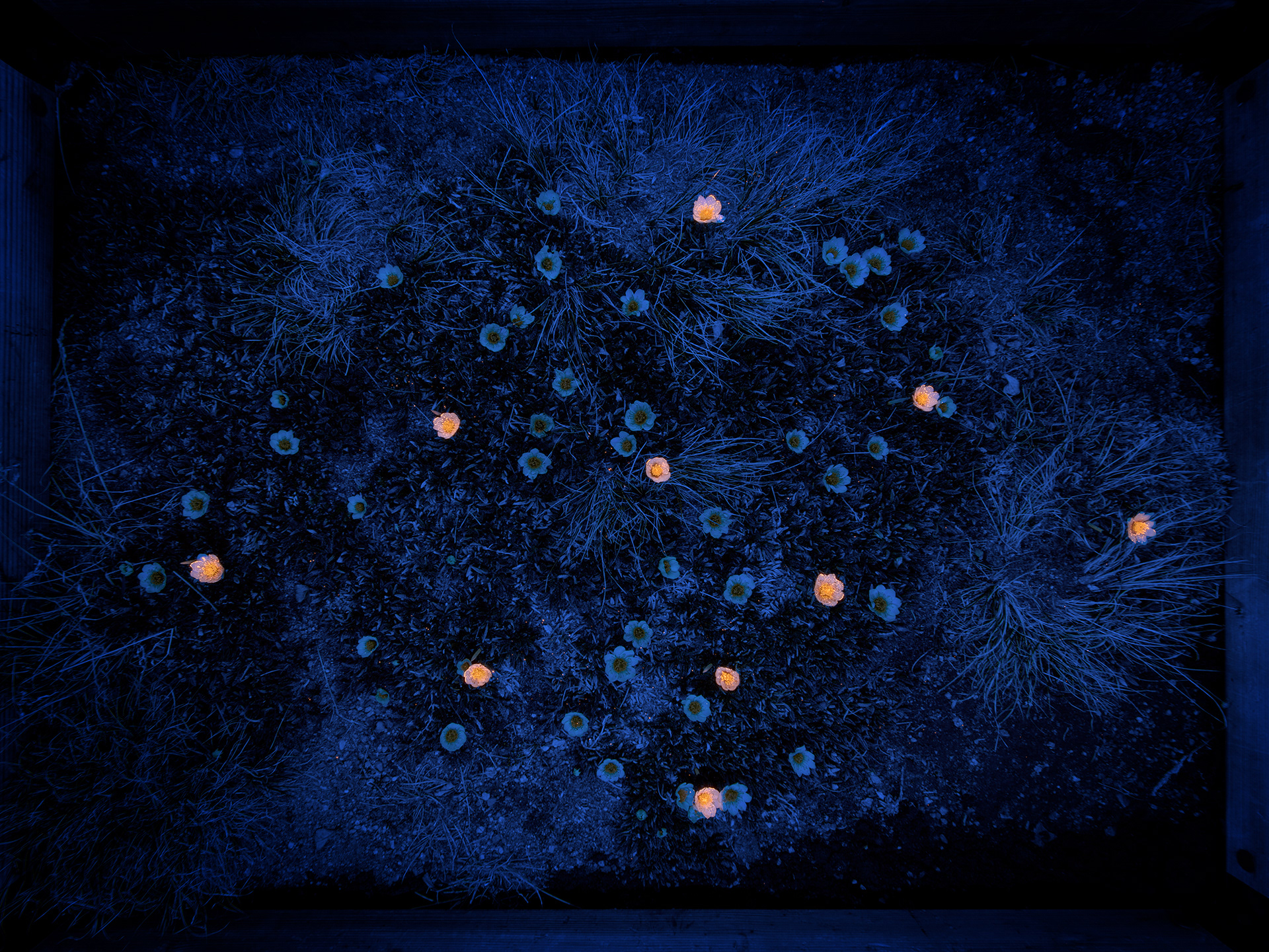
Slot A2 at 0h
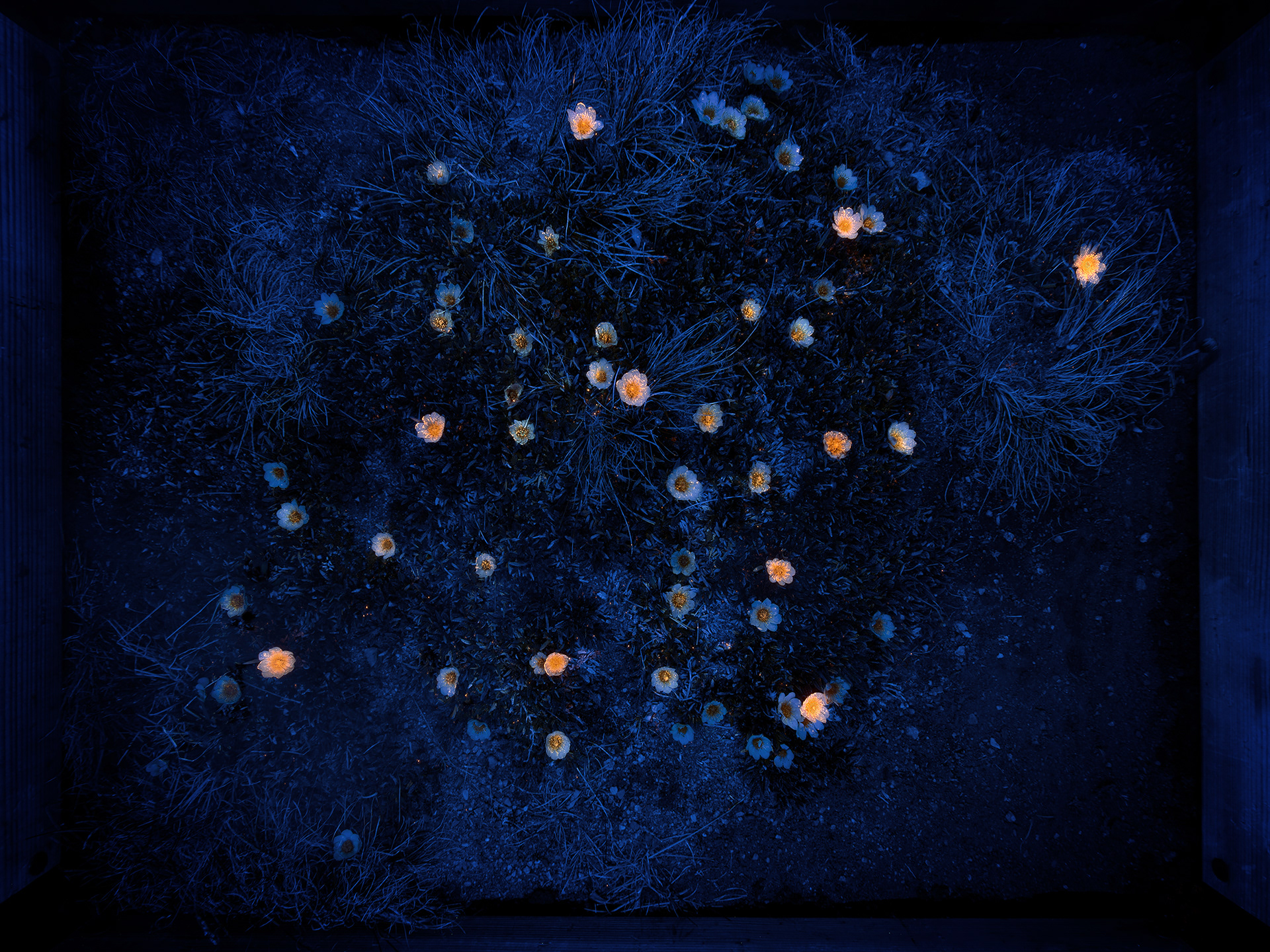
Slot A2 at 72h
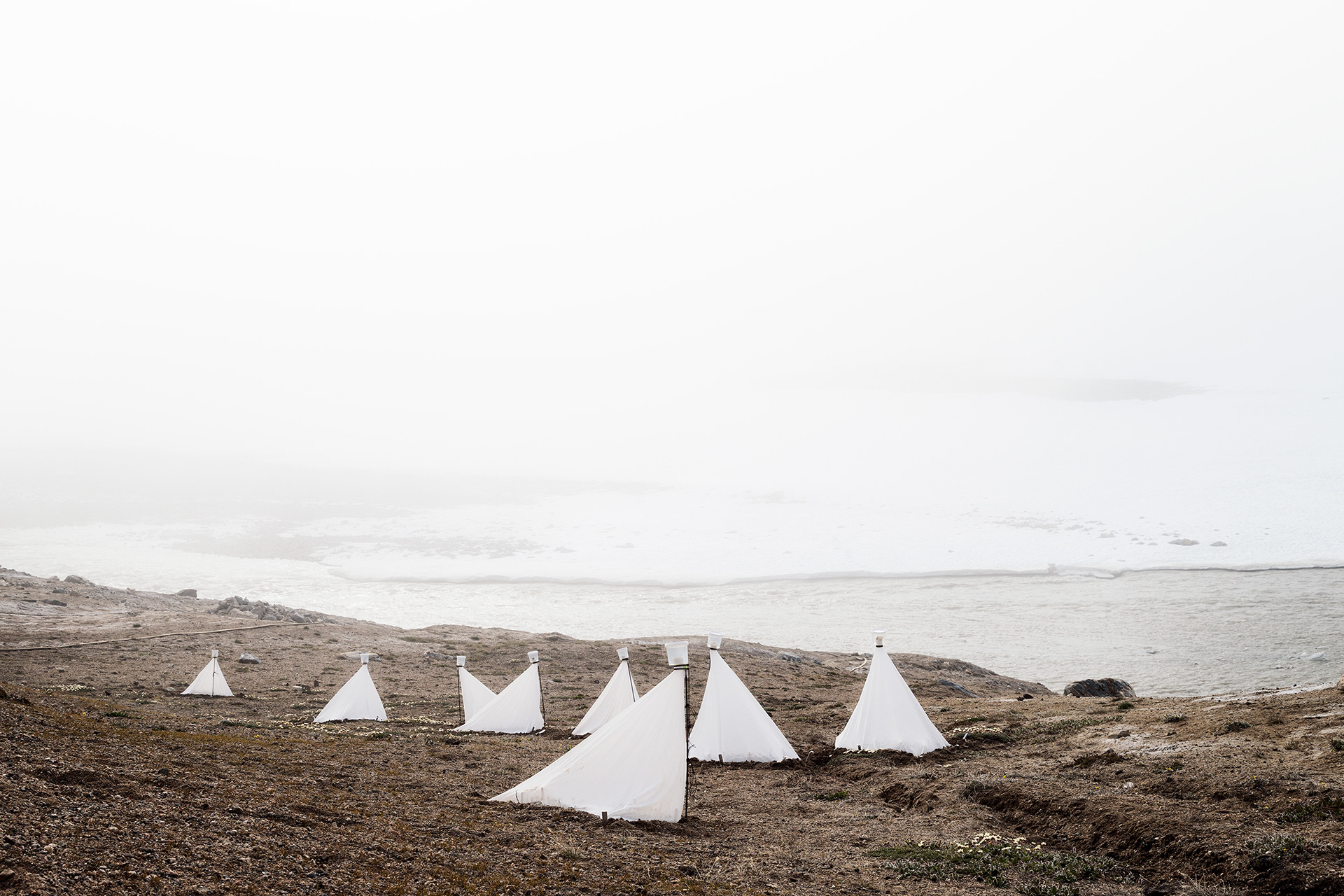
Isolation Tents
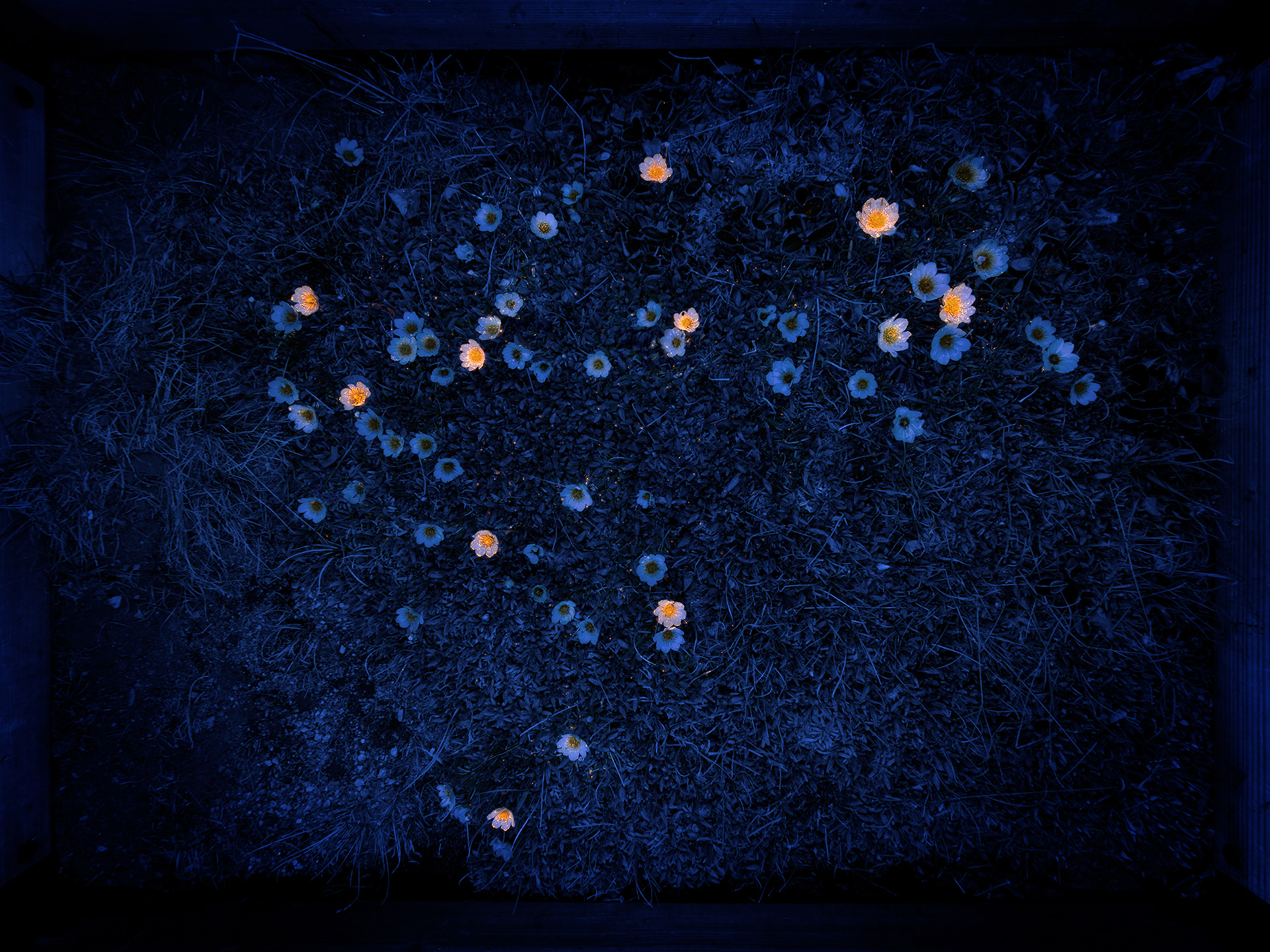
Slot B1 at 0h
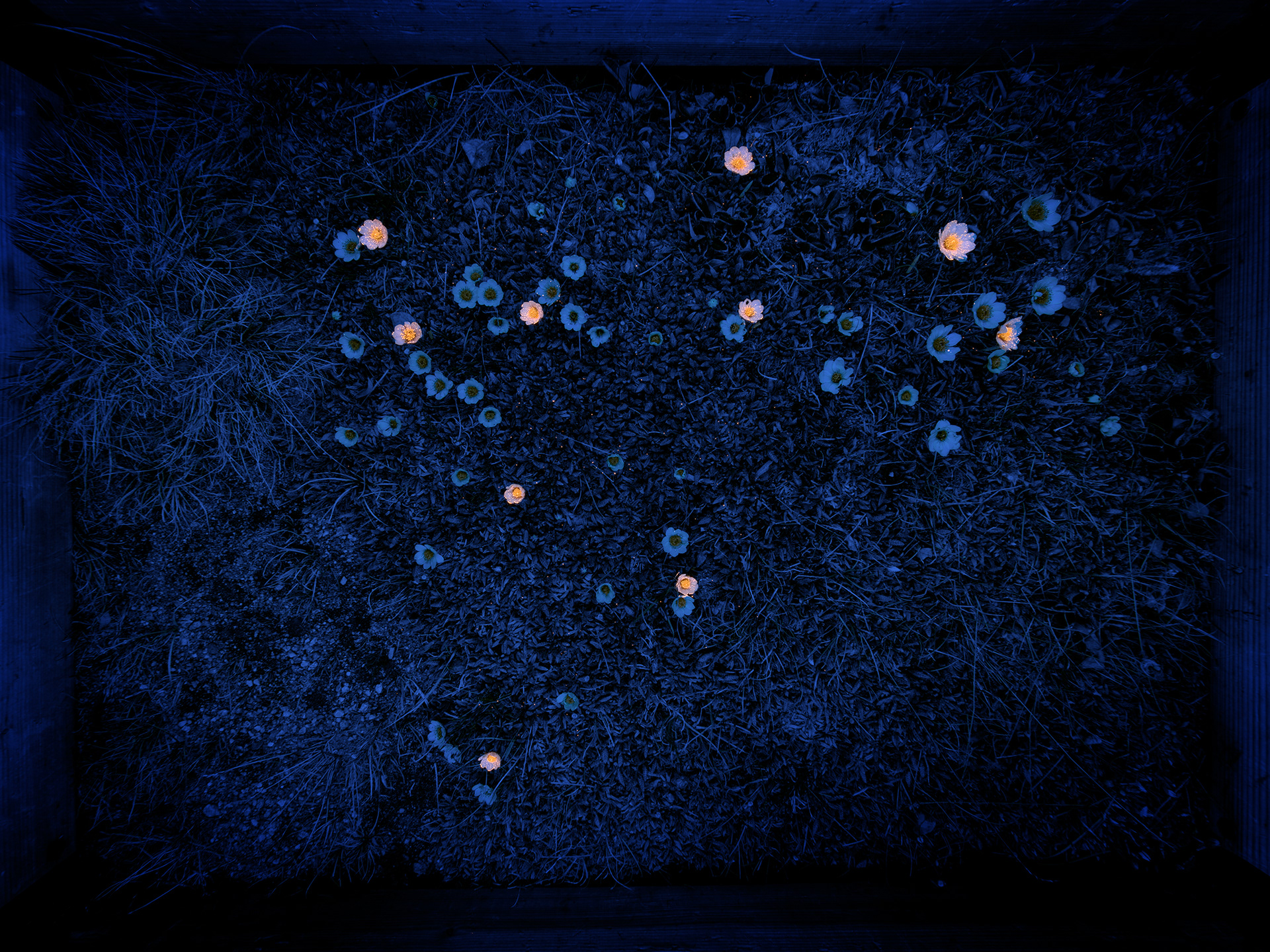
Slot B1 at 72h
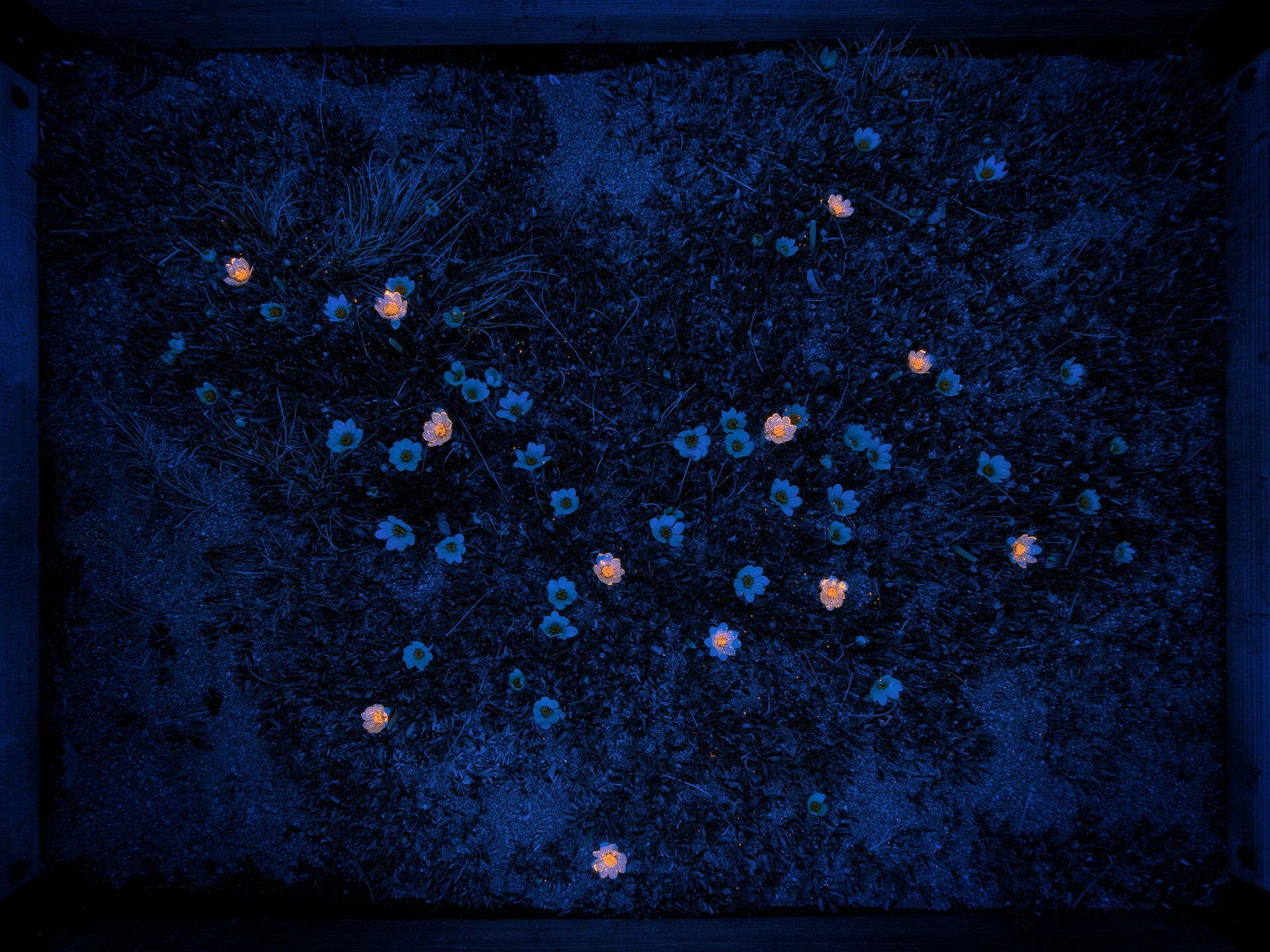
Slot B2 at 0h
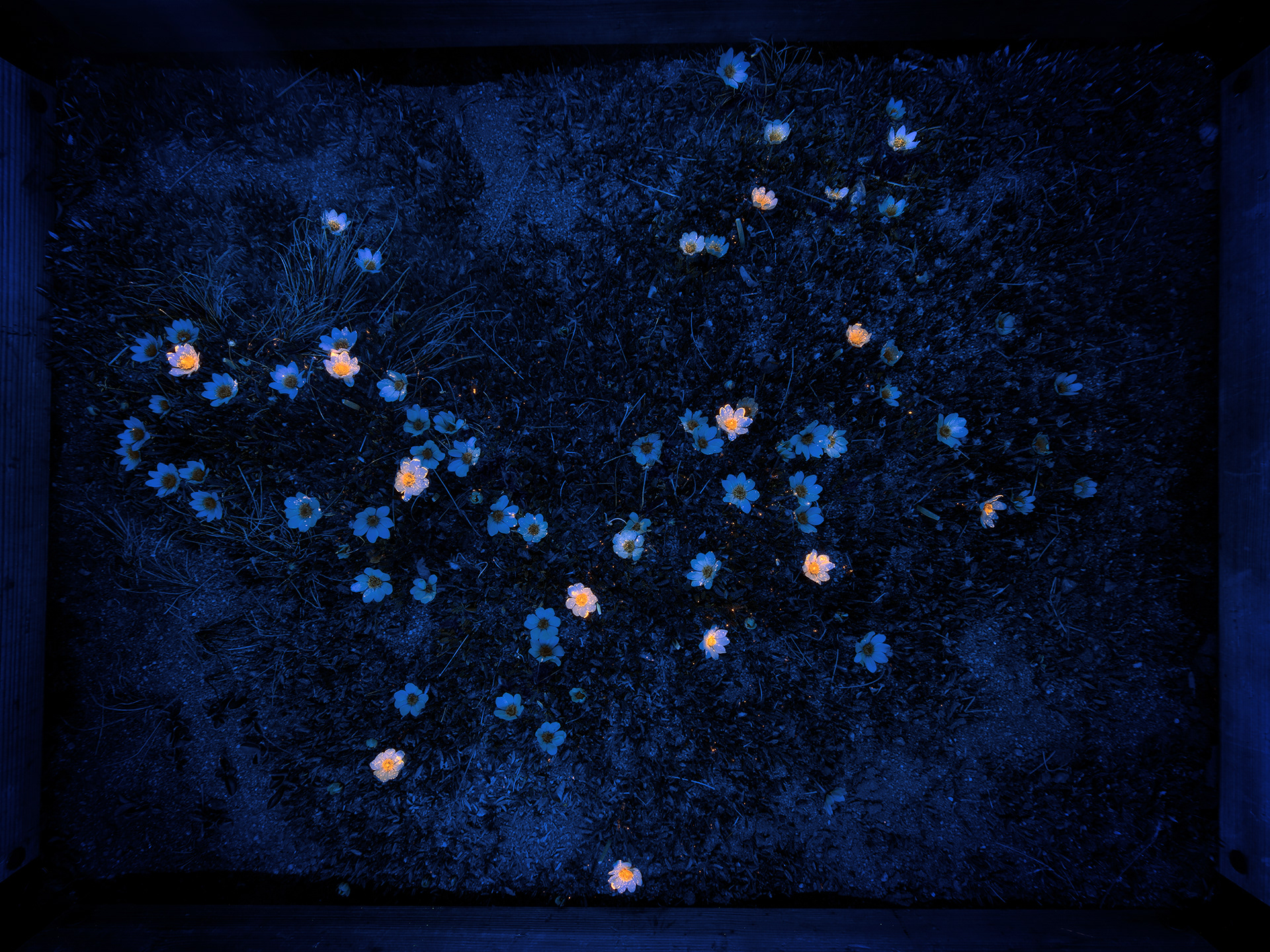
Slot B2 at 72
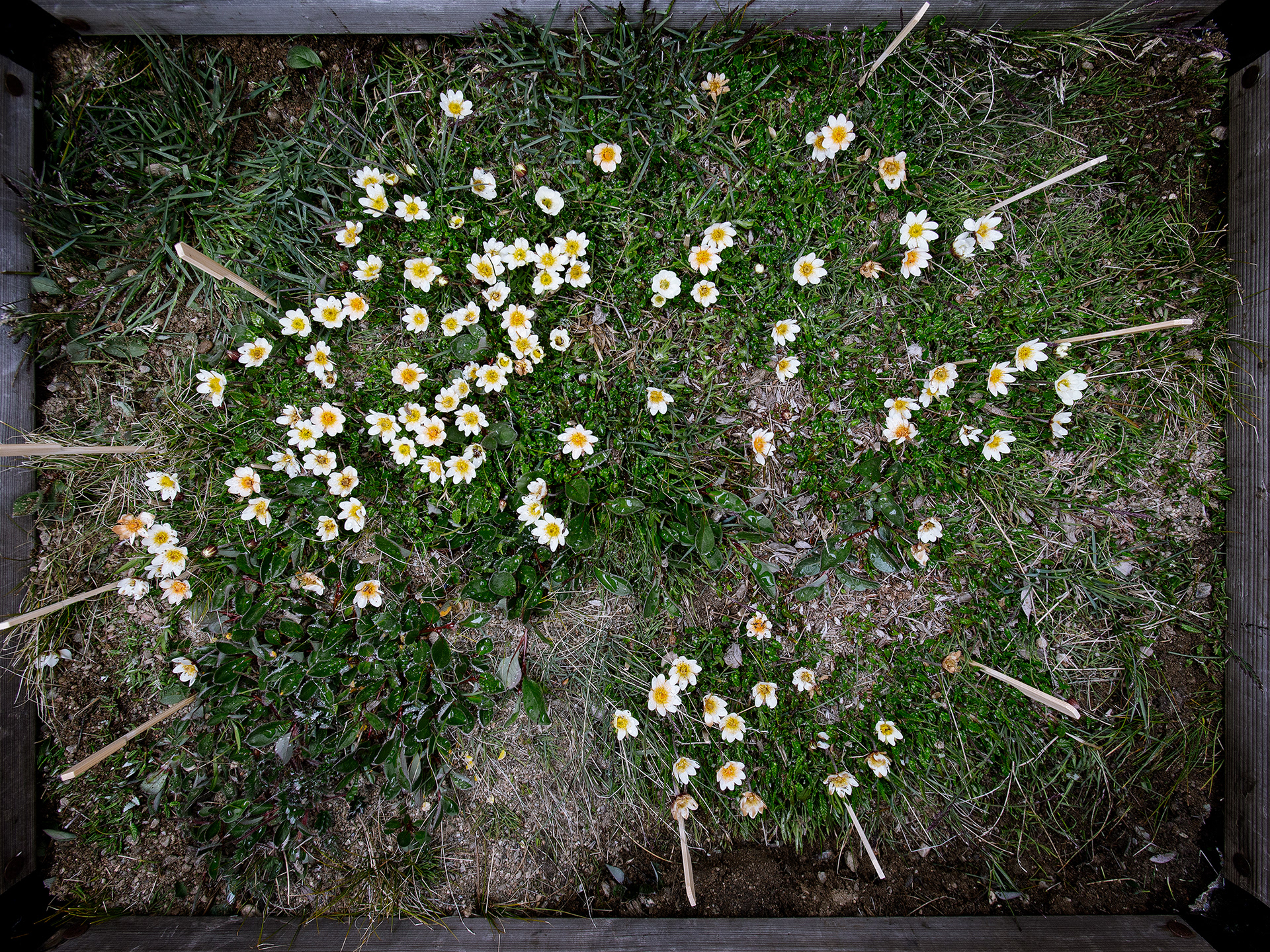
Dryas octopelata
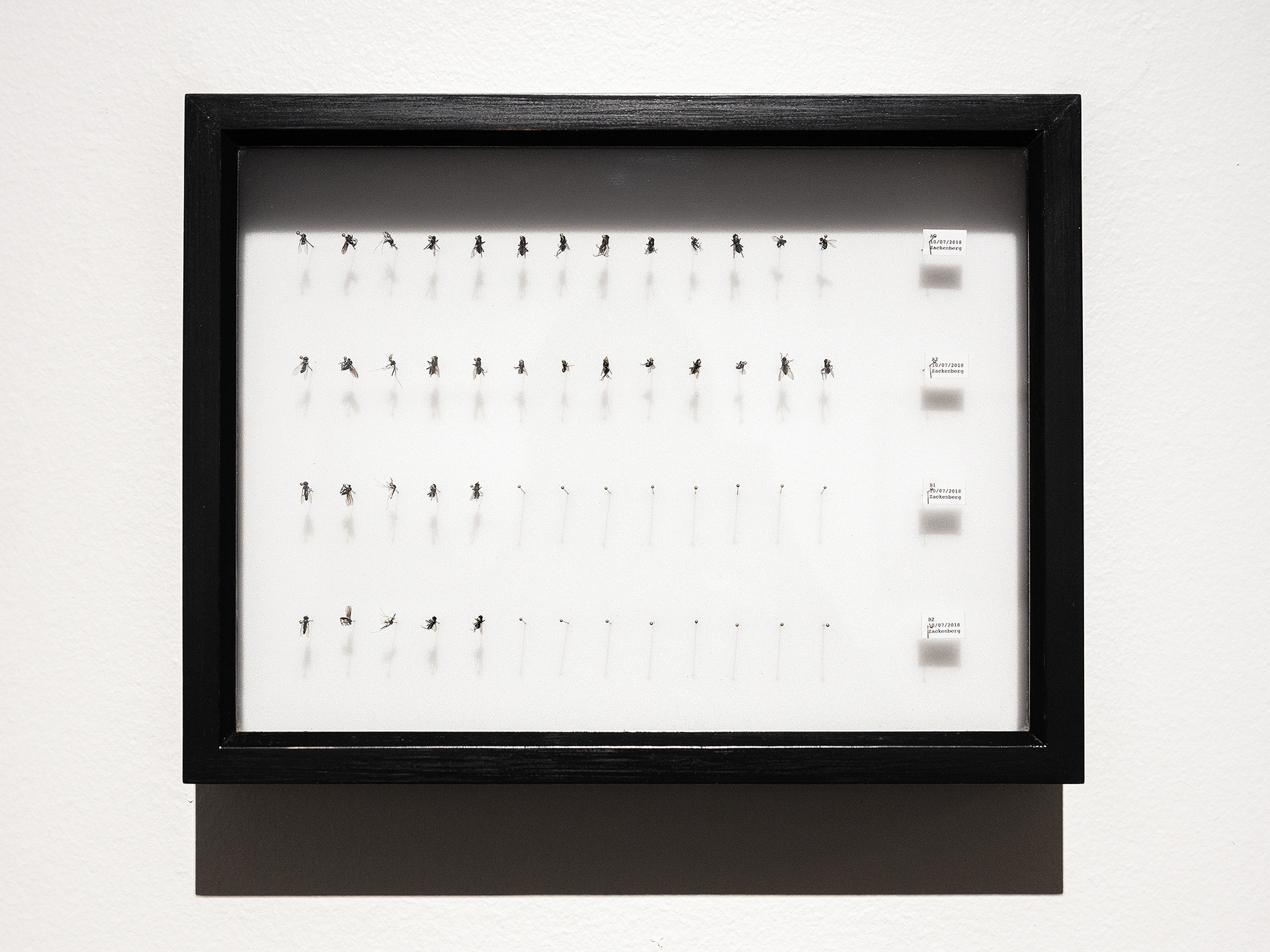
Test Assemblages / insects, insect pins, foam rubber, frame (© Milla Talassalo)
